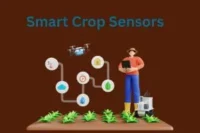How Drone Technology Rescued a Struggling Farm in the Heart of America
Published: 16 Apr 2025
In the heart of the American Midwest, where generations of families have lived by the rhythm of the land, farming is more than work — it’s identity, heritage, and hope.
For Jake Thompson, a third-generation corn farmer in Iowa, 2022 felt different. Despite decades of experience and a deep connection to his soil, yields were falling, and pests were silently spreading before anyone could see the signs. What Jake didn’t know yet was that salvation would come — not from tradition, but from technology flying overhead.
So, guys, without wasting time, let’s jump into the article to learn How Drone Technology Rescued a Struggling Farm in the Heart of America
The Breaking Point:
Jake had walked the same 500-acre farm since childhood. But by mid-summer, he was facing a silent crisis.

- Patches of corn were yellowing too soon.
- Pest damage showed up late — too late.
- Fertilizer costs were rising with no clear return.
“I started to feel powerless,” Jake recalled. “I knew something was wrong. I just couldn’t see it in time.”
Traditional scouting couldn’t cover enough ground. Crop loss wasn’t just frustrating — it was financially devastating.
The Turning Point: Technology from Above
At a local agriculture expo, Jake saw a demonstration of drone crop monitoring technology. These weren’t just flying cameras — they used multispectral imaging to detect:
- Plant stress before it’s visible
- Disease hotspots
- Pest infestations
- Variations in soil moisture and nutrients
The Transformation: From Guesswork to Precision
In early July, drones flew across his fields in less than 30 minutes — capturing high-resolution data that told a story the naked eye never could.
What they found changed everything:
- Aphid infestation in one corner of the farm — before it spread.
- Nitrogen deficiency in specific zones.
- Uneven moisture distribution, even within the same plot.
Armed with insights, Jake acted fast:
- Applied targeted pesticides only where needed
- Adjusted fertilizer rates by zone
- Improved drainage and drip placement
“I wasn’t just farming harder,” Jake said. “I was farming smarter. For the first time, I had control again.”
The Results: A Farm Reborn
By harvest, Jake saw a 28% increase in yield compared to the previous season — with lower input costs and less environmental impact.
More than that, he regained peace of mind. The drone didn’t just save a season — it saved his future on the farm.

“That drone gave me my confidence back,” he said. “And it gave my kids a reason to believe in the land again.”
The Bigger Picture: A Midwest Movement
Jake’s story is now part of a growing shift in American agriculture. Across the Midwest, farmers are embracing drone technology not as a replacement for tradition, but as a partner to it.
What used to take days of scouting can now be done in minutes. Problems are spotted before they become disasters. Inputs are used more efficiently, and sustainability becomes real — not just a buzzword.
FAQs about Internet
Here are some of the most frequently asked questions about How Drone Technology Rescued a Struggling Farm in the Heart of America
The farm was suffering from falling yields, unseen crop diseases, and rising input costs.
Traditional methods couldn’t keep up with the scale or speed of issues.
Drones scanned the entire field and identified early signs of plant stress and pest outbreaks.
This allowed the farmer to take fast, targeted action before major damage occurred.
The farm saw a 28% increase in yield and reduced fertilizer and pesticide use.
Costs went down, and crop health improved significantly.
At first, the farmer relied on a local agtech provider to fly and analyze the data.
Later, he learned to fly drones himself using a mobile app — it became routine.
Even traditional farms can thrive when innovation is embraced.
Sometimes, the best way forward is by looking from above.
Conclusion:
Jake Thompson didn’t leave behind his legacy — he evolved it. With drones as his eyes in the sky, he now steers his farm with data, insight, and precision.
In a world where climate, cost, and complexity challenge every farmer, Jake’s story proves that the future of American agriculture isn’t just on the ground. It’s in the skies — where innovation meets tradition, and hope flies high.

- Be Respectful
- Stay Relevant
- Stay Positive
- True Feedback
- Encourage Discussion
- Avoid Spamming
- No Fake News
- Don't Copy-Paste
- No Personal Attacks

- Be Respectful
- Stay Relevant
- Stay Positive
- True Feedback
- Encourage Discussion
- Avoid Spamming
- No Fake News
- Don't Copy-Paste
- No Personal Attacks





